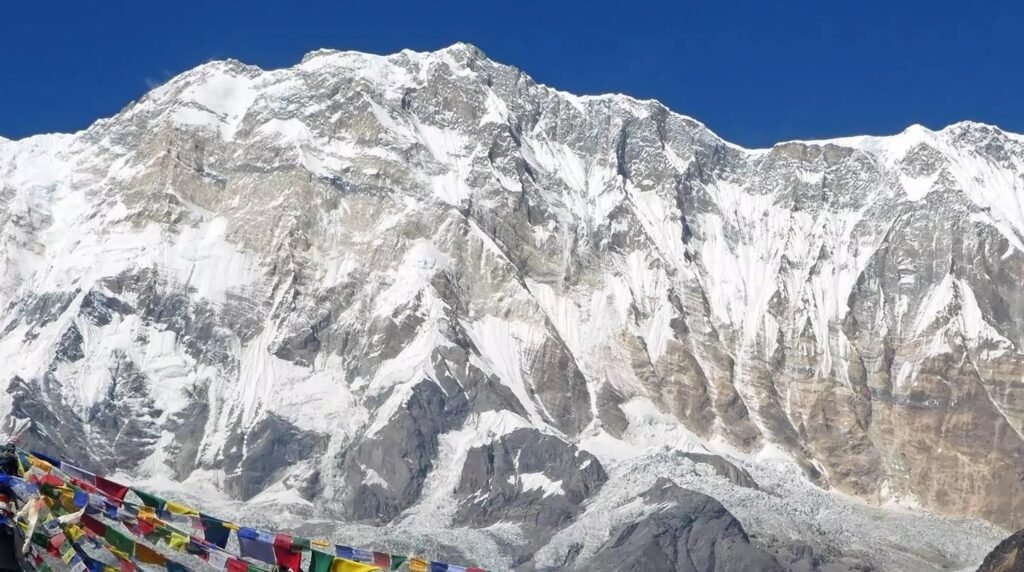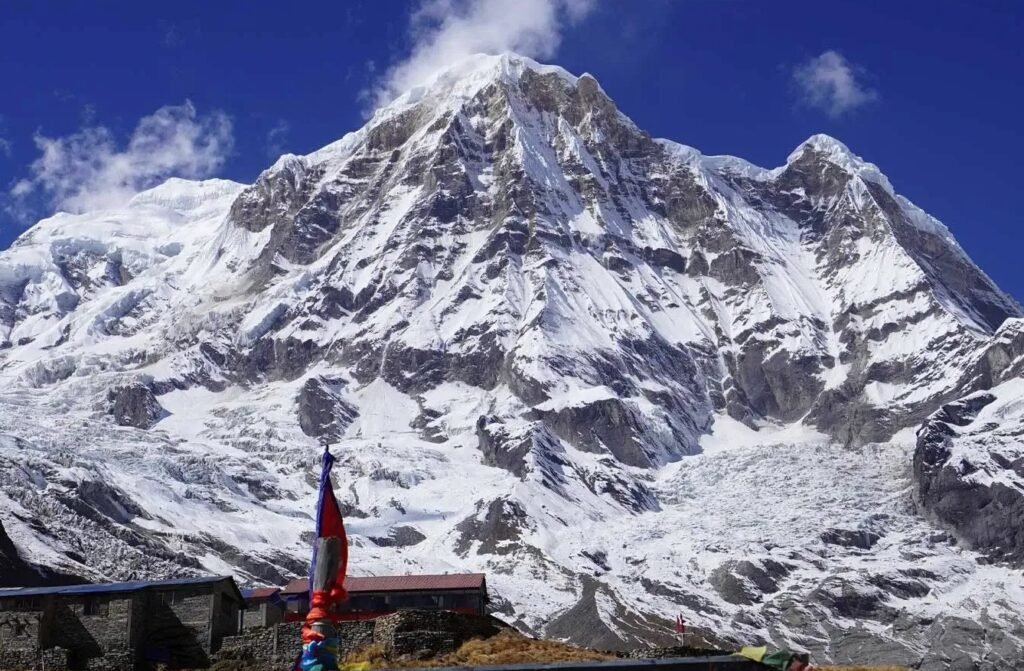The Annapurna Base Camp Trek (ABC Trek) is a famous Himalaya walk, which combines beautiful views, rich culture, and easy adventure. The ABC trek is good for a first-timer or a high-altitude trekker who wants an easy but rewarding trek. Using the knowledge and experience of operators like Trek The Himalayas and Indiahikes, this guide is designed to make your ABC trek planning simple, realistic and memorable.

Why Annapurna Base Camp Trek Belongs on Your Bucket List.
The trail leads through the jungle and terraced fields before finally opening out to the huge amphitheater of Annapurna Base Camp (4,130 m). You get to see Annapurna I, Machhapuchhre (“Fishtail”), and Hiunchuli at sunrise in front of you.
Experience the Culture & Hospitality: Experience Gurung and Magar villages, their culture, and enjoy meals in cozy teahouses.
Relax in the hot springs at Jhinu Danda after a few days on the trek!
The trek ABC is moderate so fit beginners can do it and experienced trekkers enjoy it.
Here is the paraphrase of the provided text:
Expert operators suggest using a reusable bottle to minimise plastic and respect the mountains’ ecosystem for the future.
Key Details
| Aspect | Details |
| Location | Nepal, Annapurna Conservation Area |
| Popularity | One of the world’s most famous trekking routes |
| Trekking Altitude | 4,130 meters (13,550 feet) |
| Cultural Highlights | Gurung/Magar villages, local hospitality |
| Natural Highlights | Panoramic mountain views, rhododendron forests |
| Trek Difficulty | Moderate |
| Best Season | Spring & Autumn |
| Economic Impact | Supports local livelihoods via tourism/trekking |
Typical ABC Trek Itinerary
While schedules may vary, most treks span 7–12 days from Pokhara. Here’s a sample plan:
| Day | Route | Altitude | Highlights |
| 1 | Pokhara to Nayapul, trek to Ghandruk/Ulleri | 1,940 m | Starting point, riverside villages |
| 2 | Trek to Chomrong | 2,170 m | Gateway to ABC, cultural immersion |
| 3 | Chomrong to Bamboo | 2,345 m | Rhododendron forests, wild birds |
| 4 | Bamboo to Deurali | 3,230 m | Gaining altitude, dramatic cliffs |
| 5 | Deurali to Machhapuchhre BC to ABC | 4,130 m | Stunning high-altitude landscape |
| 6 | ABC sunrise, descend to Bamboo | Peak experience, retracing steps | |
| 7 | Bamboo to Jhinu Danda | 1,780 m | Hot springs |
| 8 | Jhinu Danda to Nayapul, drive to Pokhara | 825 m | Relaxation, trip ends |
Side trek options include Poon Hill for sunrise views.
Trekking Distance & Difficulty
- Total Distance: ~70–115 km (round trip, depending on chosen trail).
- Max Altitude: 4,130 m (13,550 ft) at Annapurna Base Camp.
- Difficulty: Moderate. No technical sections, but daily ascents/descents and altitude require fitness, determination, and acclimatization awareness.
What’s Unique About ABC Trek?
- World-Class Scenery: Unlike the Everest region, ABC’s landscape transforms every few hours—sun-shattered forests, terraced fields, roaring rivers, and glacier valleys.
- Culture: Teahouse stays with locals, Buddhist monasteries, prayer flags, and Nepalese cuisine (dal bhat, momo dumplings, local yak cheese).
- Responsible Trekking: Some operators (especially Indiahikes) require trekkers to collect and carry their own waste, use water filters, and avoid single use plastics making the trek eco-friendly.
Permits & Preparation
- Required Access:
- Annapurna Conservation Area Permit (ACAP)
- Trekkers’ Information Management System (TIMS) Card
- Planning:
- Book permits in Kathmandu or Pokhara before starting.
- Most treks are guided/group formats, though independent treks are possible for experienced hikers.
Accommodation, Food, and Services
- Teahouses/Lodges: Cozy rooms (typically twin beds); basic but warm spaces. Shared toilets and showers, sometimes solar-powered.
- Meals: Simple, filling dal bhat (Nepal’s staple), noodles, eggs, pancakes. Vegetarian/vegan options widely available.
- Charging Devices: Solar or generator charging for electronics at most stops, usually for an extra fee.
- Internet/Wi-Fi: Limited or patchy digital detox guaranteed!
Packing Essentials
Prepare for dramatic weather changes:
- Layered clothing (base, insulating, waterproof/outshell)
- Trekking boots (broken in), sandals for evenings
- Down jacket, sleeping bag (-10°C comfort)
- Sunglasses, sunblock, hat, warm gloves
- Personal medicine, altitude tablets, water purification system
- Lightweight snacks, headlamp, extra batteries
- Cash in local currency for remote payments
Safety & Health
- Altitude sickness (AMS) can affect anyone above 2,500 m acclimatize, hydrate, and be prepared to descend if symptoms arise.
- Trekking with a local guide and/or group ensures quick help in emergencies.
- Carry comprehensive insurance covering high-altitude rescue and medical costs.
Flora & Fauna
- Spring brings forests ablaze with rhododendron blooms.
- Spot wildlife like langur monkeys, mountain goats, and exotic birds.
- Rivers (like Modi Khola) add to the trek’s wild soundtrack.
Best Seasons
- Spring (Mar–May): Moderate temps, rhododendrons.
- Autumn (Sep–Nov): Clear skies, crisp mountain air, best overall visibility.
- Winter: Very cold, possible route blockages.
- Monsoon: Wet, muddy trekking possible but less recommended.
ABC Trek Sustainability Tips From Indiahikes
- Take reusable water bottles (avoid plastic!)
- Use purification tablets/filters and do not buy bottled water in villages.
- Collect and dispose of waste properly; most trekkers pack out what they pack in.
- Respect local customs and wildlife, keep noise to a minimum and never litter.
FAQs About Annapurna Base Camp Trek
How tough is the ABC trek?
ABC is marked “moderate.” You won’t need climbing skills, but the walk is strenuous, with long days and steep climbs. Physical fitness, mental grit, and proper pace are key.
Do I need a guide or porter?
A guide is highly recommended for safety, local knowledge, and logistics. Porters can help lighten your load. Solo trekking is legal but less advised for first-timers.
What permits do I need?
You must have both an Annapurna Conservation Area Permit (ACAP) and a TIMS card
How to avoid altitude sickness?
Ascend gradually, drink water frequently, listen to your body, and descend immediately if serious AMS symptoms appear (headache, nausea, confusion).
Can families or kids trek to ABC?
Families and teens (12+) with hiking experience and good health can complete the trek. Check with your operator on child-friendly pacing.
Is food safe for foreigners?
Most teahouses serve fresh, vegetarian meals to minimize risk. Avoid uncooked foods and opt for boiled drinks
What’s the biggest challenge?
Variable weather, altitude, and steep terrain. Prepare and train physically, and pack smart.
Are there ATM/cash options on the trail?
No. Carry Nepali rupees (cash) from Pokhara or Kathmandu for expenses.
What are responsible trekking practices?
Bring a refillable bottle, avoid littering, don’t disturb wildlife, and support local businesses.
Can I add Poon Hill or other routes?
Yes, many trekkers add Poon Hill for spectacular sunrise views, or extend to Annapurna Circuit if time permits.
Final Thoughts: Make Your ABC Trek Life-Changing
The Annapurna Base Camp Trek is more than just a physical journey; it’s a cultural and personal odyssey through the heart of Nepal. Every winding path, every sunrise over Machhapuchhre, and every smiling teahouse host brings a special memory. Commit to trekking sustainably, prepare well, and embrace the challenge, and ABC will reward you with views and friendships that last a lifetime
